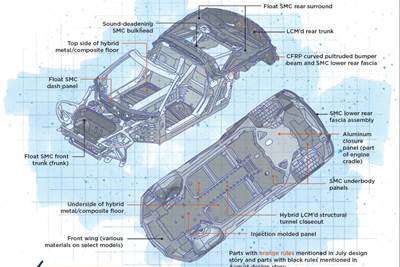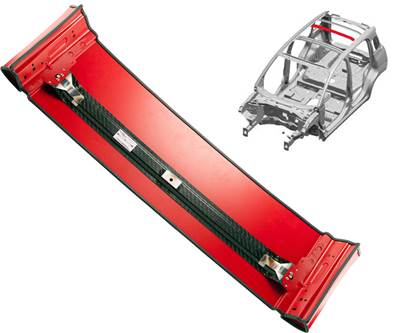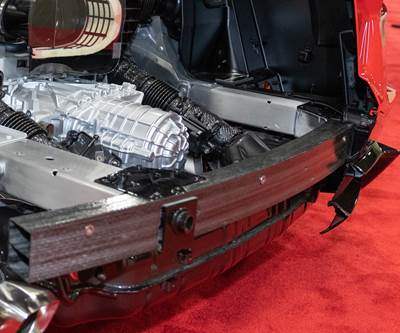
GM’s 2019 model year (MY) Chevrolet Silverado pickups sport a new structural application for composites in a hidden but very effective location: on the left and right front sides behind the steel bumper. The hybrid thermoplastic composite/metal bracket reduces mass, achieves equivalent or better performance in modal, stress, fatigue and crash testing in limited package space, reduces corrosion and warranty risks and permits significant parts consolidation. All photo credit: General Motors Co.
It’s not easy being an OEM design engineer working on full-size pickup programs. On one hand, you want to make these vehicles as safe, feature-rich and fuel-efficient as possible. On the other hand, your customers — particularly those in the construction and farming industries — push their vehicles hard every day and have certain ideas about what is and isn’t a durable material. They know and trust steel. Composites? Maybe not so much.
As Chris Heo, lead design release engineer for full-size pickups at General Motors Co. (GM, Detroit, Mich., U.S.), and his team began work on the latest generation of Chevrolet Silverado pickups, they discussed which applications they might be able to convert from metal to composites to reduce vehicle mass.
For the 2019 model year (MY), the decision had already been made to keep styled bumper impact bars — stamped steel bumpers with styled A-side surfaces and finishes (either chrome plating or body-color paint) — on the vehicle’s front and rear. Due to styling-driven shape, and the mass of the steel shells, such bumpers typically require one or more steel reinforcement brackets to join the bumper to the vehicle’s frame and meet GM’s bumper durability, vehicle damageability, crash performance and packaging requirements. In this case, a pair of brackets wrapped around left- and right-hand corners of the bumper. Team members wondered if they could convert these heavy, complex, multipiece stampings to something lighter without sacrificing performance or durability.
“We discussed ways we could keep the bumper’s metal skin but convert hidden components to lightweight materials,” recalls Heo. “We knew this would be a challenge because you need robust brackets to hold a heavy part like a bumper, and both bumpers and brackets must perform for the life of the vehicle. Also, these brackets are key for meeting demanding offset barrier crash tests and — even in metals — those are challenging tests to pass.”
First to try
Undaunted by the challenge, the GM team got to work and soon brought in the vehicle’s designated bumper supplier, Flex-N-Gate Corp. (FNG, Urbana, Ill., U.S.). Initially, as exterior vehicle styling was still being finalized, the joint team spent a year researching options in the industry and discussing approaches that might work. “We were waiting for the right time because, depending on final styling, that could change the design we used and the approach we took,” explains Heo.
On its first commercial use, GM’s hybrid approach on the structural bumper bracket brought numerous benefits.
“We knew that another company had converted a very small bracket — one that wasn’t structural — to composite on one of their truck bumpers, so that gave us a place to start,” adds Steve Perucca, FNG engineering group manager - R&D plastics/metals. FNG already had lots of experience converting structural metal parts to thermoplastic composites on passenger vehicles, and that gave the team the confidence to move forward.
Design considerations
As exterior design was firmed up on the pickup, the combined team began its own design work on the brackets with a list of wants and needs. The benchmark brackets were stamped from high-strength/low-alloy (HSLA) steel, selected for its higher mechanicals and improved corrosion resistance versus carbon steel. The brackets had a nominal thickness of 3 millimeters and each weighed 4.362 kilograms. First, the composite brackets needed to fit in roughly the same package space, which was limited behind the bumper. Thus, a material with sufficient strength was needed so part thickness didn’t increase significantly.
Figure 1. Before (top) and after (bottom) designs for the hybrid structural bumper bracket. The team used a unique method to attach composite (brown) and steel (green) portions of the hybrid bracket. Rather than bond with a structural adhesive, which would have added time, robots, curing racks and cost to vehicle assembly, they used a three-bolt/two-plane mechanical fastening system (see yellow outline) that reduces stress. Two of the bolts are applied along the front surface of the brackets and a third is positioned above it. Limiters on the bushings prevent overtightening during assembly. While it produces a robust fastening point, it is fully serviceable.
Second, front bumpers typically wrap around the front corners of the vehicle to achieve styling cues the design studio wants. However, because they’re held to the frame by the stiff steel brackets, during high-speed crash events, the bumper can be crushed inward into the wheel, negatively impacting wheel orientation and locking up steering. To protect the wheel on the impacted side for as long as possible, it is desirable for bumper brackets to break away during impact. On the other hand, to avoid warranty issues, the bumper needs to stay attached during normal use for the life of the vehicle. Hence, the team had to determine how to balance these competing needs.
Still another issue the team wanted to address was that owing to steel’s formability limitations, benchmark brackets couldn’t be shaped to hold the vehicle’s fog lamps, which necessitated the use of yet another pair of heavy metal brackets. If it was possible, the team wanted to consolidate fog lamp support into the composite bracket.
Additionally, it was important to avoid a wire harness pinch point as it passed through the bracket to keep wire harnesses and wires from chafing and breaking, which would lead to short circuits of important features like headlights and fans. Avoiding those by providing a hole in the metal brackets through which wires could pass led to the use of an additional punching operation, which added more tooling costs owing to limitations in design freedom. It was, therefore, desirable to try and address this issue in the composite bracket. Of course, it also was important to avoid having to make changes in vehicle assembly to use composite brackets. And, as is often the case in automotive applications, the composite brackets would, ideally, be lighter and less expensive than the metallic benchmarks. One last concern was whether currently available CAE models could accurately predict high-cycle fatigue/durability in a discontinuous fiber-reinforced thermoplastic.
Hybrid approach
With their wish list in hand, the team got busy. An early decision was selecting the material to be used — namely one that FNG already had experience with and that had GM approvals. They chose a black 40% fiber weight fraction (FWF) long fiberglass polypropylene (LFT-PP) from Lotte Chemical (Seoul, South Korea) called Supran PP1340 GMW15890P. Since brackets aren’t exposed to sunlight and are sufficiently distant from engine heat, the tough olefin polymer would offer adequate thermal performance. The high-flow, injection moldable grade had a melt-flow index (MFI) of 40, ensuring good filling of complex geometry without the need to add extra gates; extra gates create knitlines that are weaker than surrounding material and should be avoided in a structural part, especially one that has to pass crash tests.
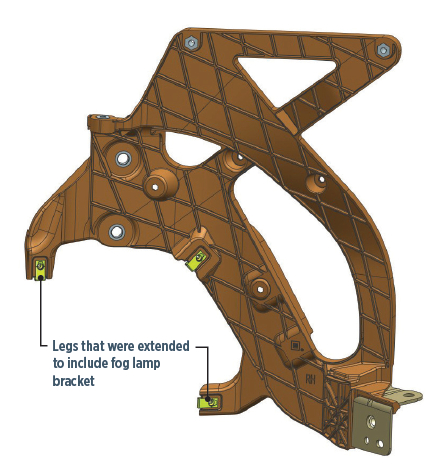
Figure 2. The final design of the topology-optimized composite bracket incorporated numerous components, including the previously separate bracket for the fog lamp, plus structural ribbing to improve mechanicals and ensure nominal wallstock did not exceed 3 millimeters. Several metal inserts help increase performance in areas that will see significant fatigue or where load paths must be reinforced to ensure appropriate crash performance.
To balance competing needs of long-term durability with high crash performance, the team took a hybrid approach and split the bracket. The portion that joined bumper to frame would remain HSLA steel, but the outer portion would be converted to composite. This approach would permit greater design freedom to consolidate parts, reduce mass and enable the incorporation of fog lamps, but the composite portion would be designed to break away in a high-speed side crash to ensure wheel orientation remained longitudinal for as long as possible to help maintain steering capability. To meet all of GM’s requirements, some metal inserts were added to the composite side of the bracket, along with three bushings, which allow for adjustment during assembly. Designers found the material had no problems permitting the bracket’s leg (the curved end pieces shown in the composite/brown CAE design) to be extended to encompass the fog lamp, eliminating the need for a separate bracket in that location (Fig. 1).
As the project proceeded, and physical parts were produced and tested, the team was happy to learn their CAE models were fairly accurate. “Initially, we wondered if we’d be able to simulate the part properly, given that we were trying to predict high-cycle fatigue, in terms of durability, and high G loading, in crash modeling,” notes Heo. “Surprisingly, correlation between predicted and measured results from shaker testing were close, even in crash.” The final bracket design was completed in less than six months. It is approximately 41 x 46 centimeters, has a nominal wall of 3 millimeters and features ribbing for higher mechanicals.
Tooling was produced by Integrity Tool & Mold Inc. (Oldcastle, Ontario, Canada) and featured a well-vented, 2+2 stack mold with two cavities/plate and two direct drops (cold runners) with sequential valve gating that produces four parts/cycle owing to the high build volume of the Silverado platform. FNG’s Ventra Evart division is the molder. Button-to-button cycle time is 60 seconds.
Significant achievements
On its first commercial use, GM’s hybrid approach on the structural bumper bracket (Fig. 2) brought numerous benefits. First, it achieved equivalent or superior performance in modal, stress, fatigue and crash testing (see table below).
|
Design |
10 Gx |
20 Gx |
1st Mode Frequency (Hz) |
||
|
Maximum Displacement (mm) |
Maximum Stress (MPa) |
Maximum Displacement (mm) |
Maximum Stress (MPa) |
||
|
Hybrid steel/composite bracket |
2.00 |
213 |
3.97 |
381 |
31.7 |
|
Benchmark all-steel bracket |
2.36 |
259 |
4.45 |
480 |
30.1 |
|
Not only did the hybrid composite bracket with metal inserts reduce mass, but its tailored geometry improved both stress and modal performance. |
|||||
Second, composites’ design freedom permitted more aggressive styling in a relatively small package space. Third, mass of the pair of hybrid brackets was reduced 2.5 kilograms/vehicle versus the benchmark. And thanks to mass decompounding effects, lighter bumper corners enabled gauge reduction on the bumper mounting brace as well as other components, so total mass for the front bumper system was reduced 7.3 kilograms versus the outgoing 2016 model.
Additionally, corrosion risk and warranty costs were reduced since the composite bracket won’t rust. Mass reduction benefits consumers by contributing to improved fuel economy or enabling a heavier payload to be carried without exceeding legal road load limits.
On a piece-price basis, the hybrid bracket was a wash, owing to the added cost of the injection mold. On a system’s cost basis, there were savings owing to the ability to downgauge additional components, although actual savings are difficult to quantify. The bracket has been in production for more than three years without problems.
For the next-generation Silverado, Heo’s team plans to continue using hybrid brackets on the front bumper, but he’s already challenged team members to start thinking about how to take a hybrid approach on rear bumper brackets. That’s complicated by the fact that rear bumpers contain step-assist features on the corners to enable people to climb into/out of the pickup box more easily and safely. Additionally, more components (such as backup-warning sensors) are packaged behind the steel skin, reducing package space.
“We will keep using a smart engineering approach of looking at problems, figuring out how products are being used and what their functional requirements are and then pushing the envelope,” concludes Heo.
Related Content
Sulapac introduces Sulapac Flow 1.7 to replace PLA, ABS and PP in FDM, FGF
Available as filament and granules for extrusion, new wood composite matches properties yet is compostable, eliminates microplastics and reduces carbon footprint.
Read MoreManufacturing the MFFD thermoplastic composite fuselage
Demonstrator’s upper, lower shells and assembly prove materials and new processes for lighter, cheaper and more sustainable high-rate future aircraft.
Read MoreThe potential for thermoplastic composite nacelles
Collins Aerospace draws on global team, decades of experience to demonstrate large, curved AFP and welded structures for the next generation of aircraft.
Read MoreBio-based acrylonitrile for carbon fiber manufacture
The quest for a sustainable source of acrylonitrile for carbon fiber manufacture has made the leap from the lab to the market.
Read MoreRead Next
Composites-intensive masterwork: 2020 Corvette, Part 1
Eighth-generation vehicle sports more composites, and features parts produced using unique materials and processes.
Read MoreAutomated joining of hybrid metal-thermoplastic composite structures
The FlexHyJoin production cell combines surface structuring, induction and laser joining and NDT for automotive mass production.
Read MoreCurved pultrusions enter production
Corvette CFRP rear bumper beam is the auto industry’s first use of new technology.
Read More

.jpg;width=70;height=70;mode=crop)
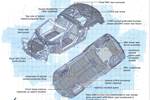
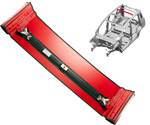




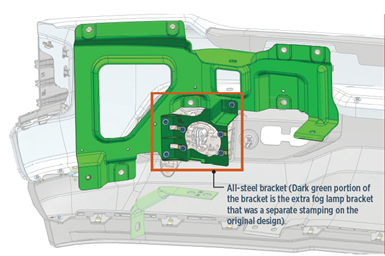







.jpg;maxWidth=300;quality=90)




